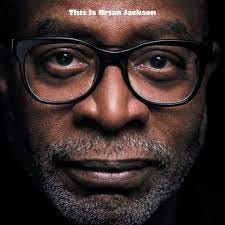
Discover more from EchoLocator
I started this week determined to not add more tonnage to the mountains of enthusiastic commenting – pro and con – on Peter Jackson’s Beatles documentary Get Back.
There’s been plenty of insightful writing on it, as well as some revisionist history and some entirely inevitable fake-controversy clickbait takes like the one in The Washington Post proclaiming “The Beatles are Overrated!”
That tells us that this film about the making of the Beatles final album Let It Be has quickly become something more than just a historical account: It’s a kind of cultural marker, a work that challenges viewers to think about music and the ways it was made and experienced then. And now.
Along that lane, here three quick thoughts (among gazillions)…..
They Were a Band. Drop in at any point of just about any of the many rehearsal takes. The four musicians (and then five after the arrival of Billy Preston, the project’s deus ex machina) can be heard flailing and casting about for ideas. The grooves are slippery and often sloppily rendered, the melodies are unfinished or fleeting (that ascending line Paul McCartney sings on the first iteration of “Get Back” and then abandons) or not there at all. Yet as the Beatles develop the general contours and specific details of the tunes, there is an overriding constant: They keep going. And they land together. The tempo is being pushed and ignored all over the place, in ways that never happen inside ProTools. Yet somehow they remain mostly in agreement on where the downbeats are. They trust each other. They cohere around the simple timekeeping Ringo Starr provides, and they hang in through the scrapes and swerves and near-miss train wrecks. That individual and collective elasticity is not something unique or awesome about the Beatles; it was once part of every musician’s tool kit in the days before click tracks. [Free advice to young musicians: Skip the Advanced Mic Stand Techniques class at the School of Rock and study the rhythm section dynamic captured on this documentary instead.]
They Worked Hard But Didn’t Take Themselves Too Seriously. Interviews and insider accounts of Beatles history have characterized it as a period of great acrimony. Michael Lindsay-Hogg’s original film showed some of that, as does Jackson’s much longer work drawn from the same footage. Alongside that, though, are glimpses of priceless goofing-off, the studio levity that usually gets lost on the cutting room floor.
The Beatles might have felt the pressure of the moment, but they didn’t let it define their endeavor. Instead they embraced each other’s silliness. They riffed on famous people and did wickedly good impressions of public figures. We see them reading the room, looking at each other while playing, and in that eye contact are flashes of love and respect and joy. It’s no accident that those qualities are inescapable in the music they were creating.
They Knew Where They Came From. When things get bogged down, someone (usually Paul McCartney) jumps into a Chuck Berry tune or an Elvis Presley cover. And within seconds the entire band is tearing it up. They know the words and the chords and the structural quirks of songs they probably haven’t played in years. We expect that kind of working familiarity with early rock; there are equally spirited detours into country, folk (“Maggie May”) and blues, too.
More impressive, though, is the way the Beatles capture – and frequently extend – the paramusical stuff that made those songs irresistible to them long ago. The covers might start as a nostalgic moment, but they quickly become something more profound: We’re watching the emotional circuitry of music as it’s being rediscovered, and then jolted into the present, by musicians known to be precise with the microscopic details. They attend to the nuances in the typical Beatle way, then abruptly swivel around and lunge into a full-on savage-screaming catharsis. It’s possible to hear the lingering residue of those impromptu covers in the captivating performances of “One After 909” and other Let It Be originals.
Seeing musicians refining songs together in a room, in real time, strikes some pundits as “boring.” I’d argue it’s powerful, and powerfully affirmative. Especially after two years of remote recording projects and the persistent de-valuing of music by streaming and decades of painstaking track-by-track music assemblage. The cosmic-minded among us might consider this footage to be a well-timed gift from the music gods. A gentle reminder of sorts. So that, in the unquestioned, ever-faster rush of technological progress, humankind doesn’t forget how to do this more elemental stuff.
Subscribe to EchoLocator
Thoughts on nearly vanished sounds, spirits, ideas.












All that’s been said about Paul being a tyrant and John being absent and disinterested has been dispelled.
Just so, Tom. If it’s possible to put side who this doc is about and just see it as you’ve described what emerges ( at least for me ) is a master class on collaboration, compromise and workmanship. So yeah, yeah yeah they’re the Beatles but that’s just the most obvious thing about “Get Back.”